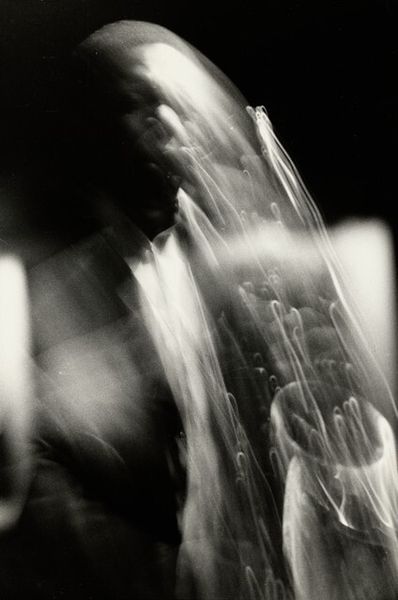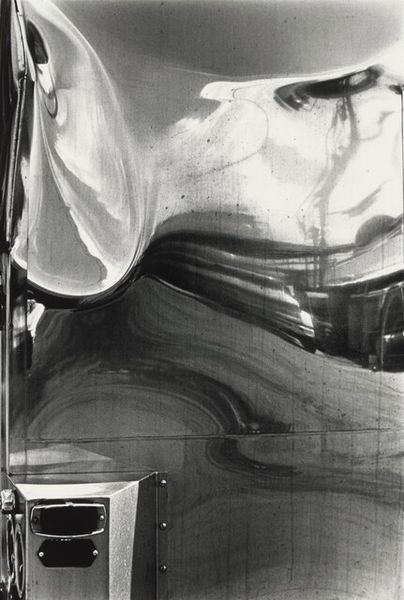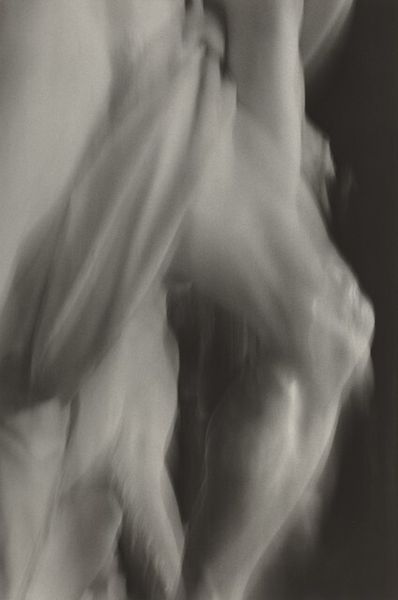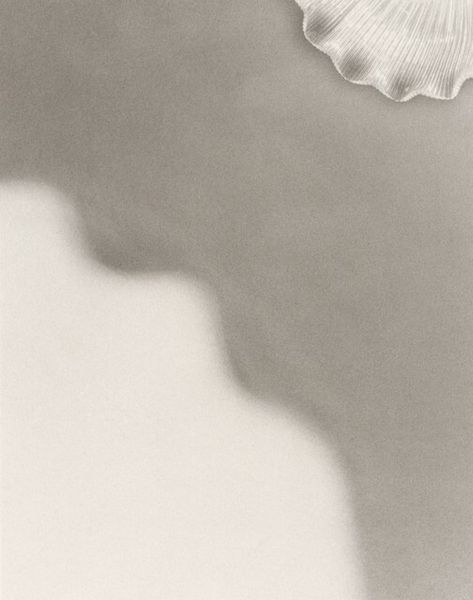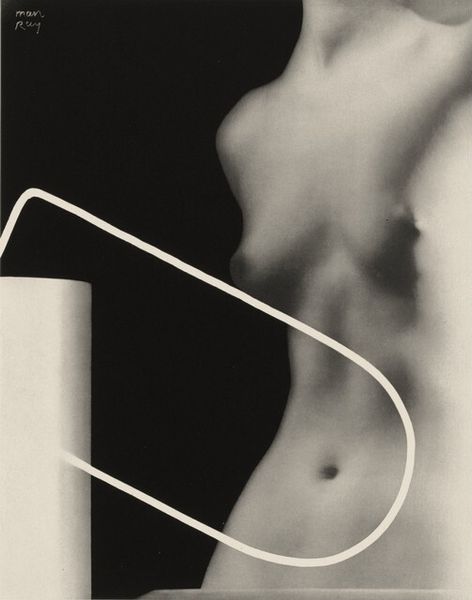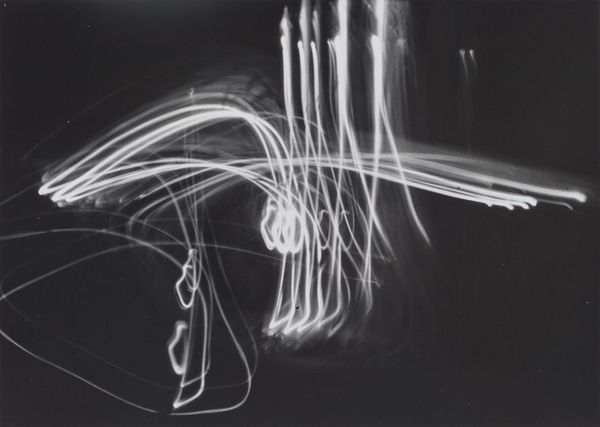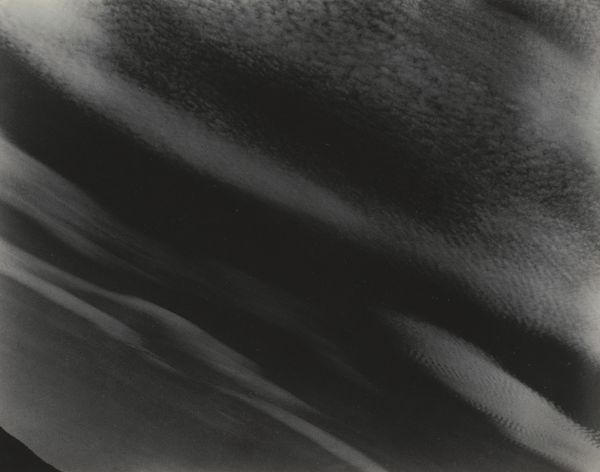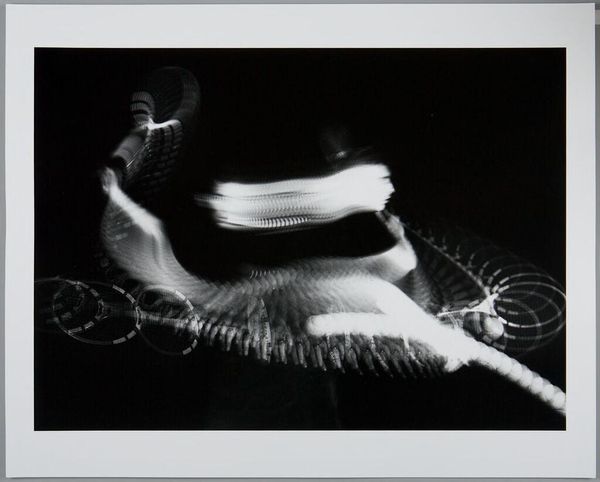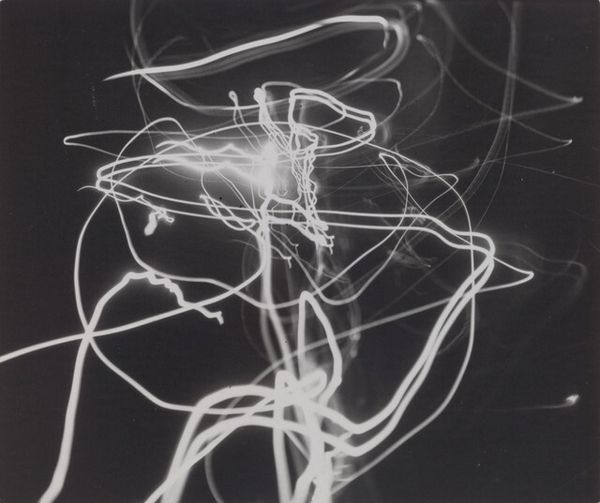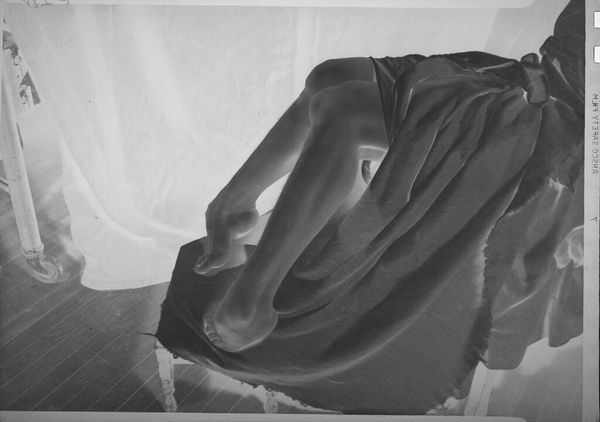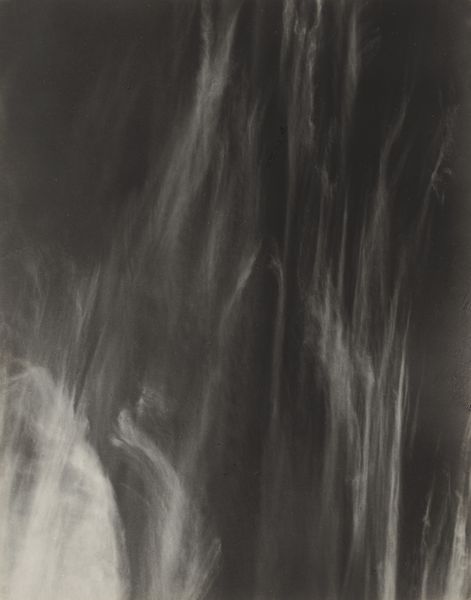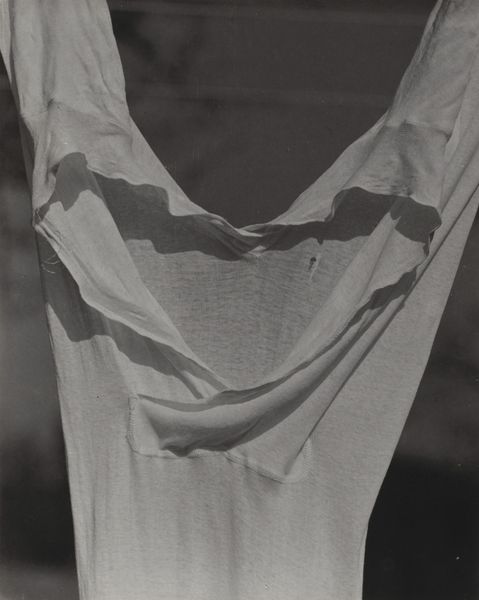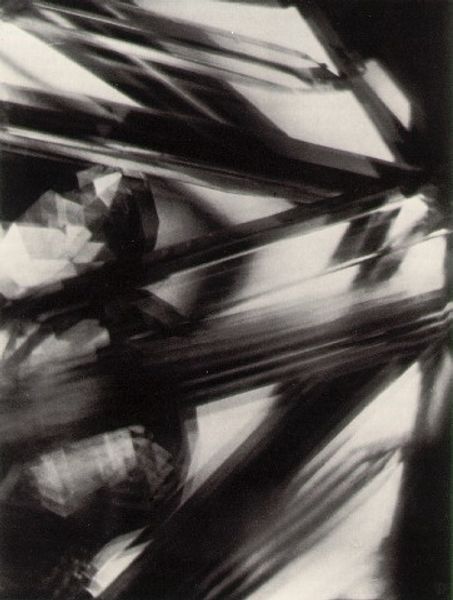
photography
#
abstract-expressionism
#
kinetic-art
#
street-photography
#
photography
#
geometric
#
black and white
#
monochrome photography
#
line
#
monochrome
#
monochrome
Dimensions: mount: 27.78 x 23.81 cm (10 15/16 x 9 3/8 in.) mat: 35.56 x 27.94 cm (14 x 11 in.) image: 13 x 12.2 cm (5 1/8 x 4 13/16 in.)
Copyright: National Gallery of Art: CC0 1.0
Curator: Let’s turn our attention to Harry Callahan’s photographic work titled "Camera Movement on Automobile Reflection," created between 1945 and 1947. It is quite something, isn't it? Editor: Absolutely. At first glance, it's a whirlwind. It evokes speed, fleeting moments, and almost a sense of disorientation with those radiating blurred forms. Curator: It's a compelling example of Callahan's experiments with movement and abstraction. Callahan was working at a time when abstraction was gaining prominence in art. Think of its potential connection to contemporary concerns of postwar industrial acceleration. What was the social meaning of this technological drive? Editor: That's interesting to consider alongside Callahan's technical innovations. His use of extended exposure to capture the dynamism of a passing automobile reflection transforms the mundane into the spectacular. He challenges our notions of photographic representation. Curator: Precisely. Notice the tonal range. The contrast between stark blacks and ghostly whites creates a visually arresting image. The high contrast underscores the linear, geometric quality, despite the blur. The lines create an ethereal quality but hold the whole structure of the piece together. Editor: From a cultural standpoint, consider the role of the automobile in postwar America: symbol of progress, freedom, and also perhaps alienation as urban spaces transformed around car use. It begs the question of where technology intersects with lived experiences. Callahan captured an aesthetic truth. Curator: He’s definitely exploring a theme that permeates other works during this period: the dynamism of modernity, seen not as an object but felt and experienced through movement. It makes me ponder: what else did Callahan try to capture within that particular period of technological enthusiasm and fear? Editor: Reflecting upon this work leaves me with a lasting impression about our ability to find beauty, and deeper meaning, even within our era’s industrial landscapes. Callahan showed a lot of promise to upcoming street photographers who used elements such as light and shadow, framing and blur to create stunning visuals in urban settings. Curator: Indeed. A reminder that, sometimes, it’s the journey, not the destination, that truly matters.
Comments
No comments
Be the first to comment and join the conversation on the ultimate creative platform.
